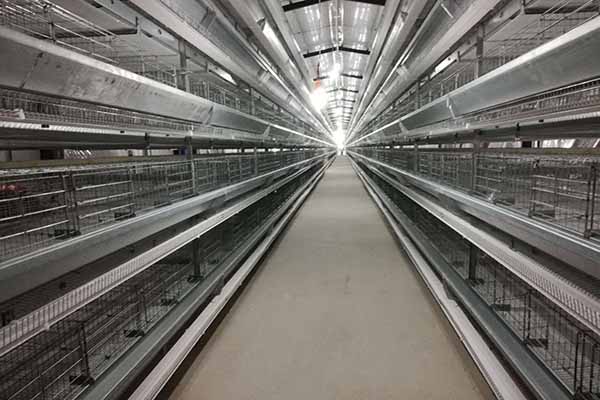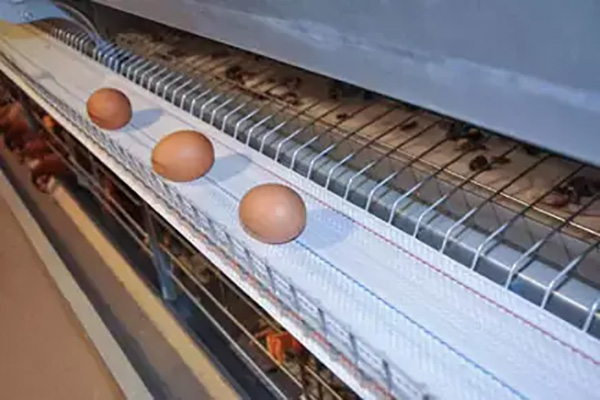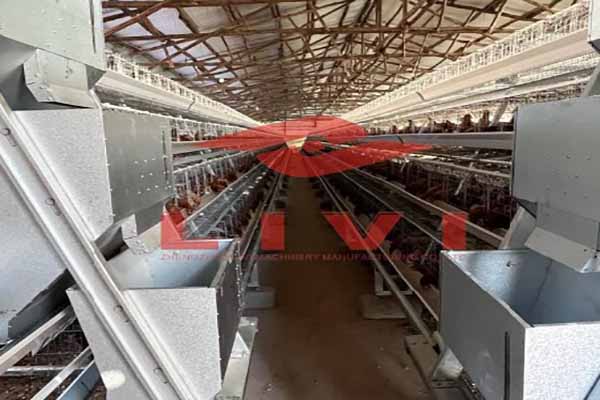Battery Cages for Broiler Chicken: A Comprehensive Guide to Optimal Farming Practices
Time : 2025-06-30
Battery cages for broiler chickens have become a staple in modern poultry farming due to their efficiency and cost-effectiveness. However, understanding the intricacies of these systems is crucial for ensuring the health and welfare of the birds, as well as maximizing productivity. This article delves into the details of battery cages for broiler chickens, covering their design, benefits, challenges, and best practices for their use.

Introduction to Battery Cages
Battery cages are designed to house broiler chickens in a confined space, typically with one or two birds per cage. These cages are constructed from metal and are equipped with a feeding trough, a waterer, and a nesting area. The design of battery cages is aimed at minimizing the risk of disease, reducing waste, and improving the overall efficiency of the farming operation.
Design Considerations
Size and Space
The size of battery cages is a critical factor in ensuring the comfort and health of the broiler chickens. Cages should be large enough to allow the birds to stand, turn around, and extend their wings without touching each other. The standard size for battery cages is typically around 0.5 square meters per bird. However, this can vary depending on the breed and age of the chickens.
Material and Construction
The material used for constructing battery cages should be durable and easy to clean. Stainless steel is a popular choice due to its resistance to corrosion and ease of sanitation. The design should also include features that prevent the buildup of bacteria and other pathogens, such as smooth surfaces and nooks where dirt can accumulate.
Feeding and Watering Systems
Efficient feeding and watering systems are essential in battery cages. Automated feeders and waterers can help ensure that all birds have access to food and water at all times. These systems should be designed to minimize waste and prevent contamination of the feed and water.
Benefits of Battery Cages
Improved Efficiency
Battery cages can significantly increase the efficiency of poultry farming operations. By confining the chickens, farmers can reduce the amount of feed and water required, as well as minimize the risk of disease spread. This can lead to lower production costs and higher profits.
Health and Welfare
Properly designed battery cages can contribute to the health and welfare of broiler chickens. By reducing the risk of disease and minimizing stress, these systems can help improve the overall well-being of the birds.
Challenges and Concerns
Animal Welfare
One of the most significant concerns associated with battery cages is the potential impact on animal welfare. Critics argue that the confined space and lack of room to move can lead to stress, aggression, and even physical injury. However, with proper design and management, many of these issues can be mitigated.
Environmental Impact
Battery cages can also have an environmental impact, particularly if not managed properly. The use of antibiotics and other chemicals can contribute to antibiotic resistance and water pollution. It is essential for farmers to adopt sustainable practices to minimize these impacts.
Best Practices for Using Battery Cages
Regular Cleaning and Disinfection
Regular cleaning and disinfection of battery cages are crucial for preventing disease and maintaining the health of the chickens. Cages should be thoroughly cleaned after each batch of birds and disinfected to eliminate any pathogens.

Monitoring and Management
Continuous monitoring of the chickens’ health and behavior is essential in battery cage systems. This includes regular health checks, weight monitoring, and observation for signs of stress or aggression. Prompt intervention can help address any issues before they become significant problems.
Environmental Sustainability
Adopting sustainable practices is vital for minimizing the environmental impact of battery cage systems. This includes using renewable energy sources, reducing water usage, and implementing waste management strategies.
Conclusion
Battery cages for broiler chickens offer numerous benefits for poultry farming operations, including improved efficiency and health. However, it is crucial to address the challenges and concerns associated with these systems, such as animal welfare and environmental impact. By following best practices and adopting susta inable approaches, farmers can maximize the benefits of battery cages while minimizing their drawbacks.
inable approaches, farmers can maximize the benefits of battery cages while minimizing their drawbacks.











